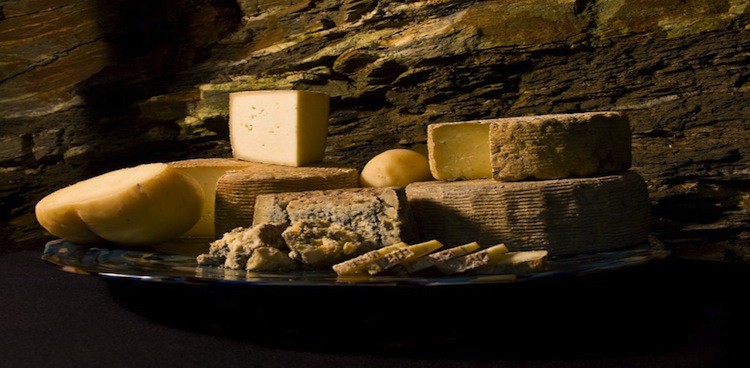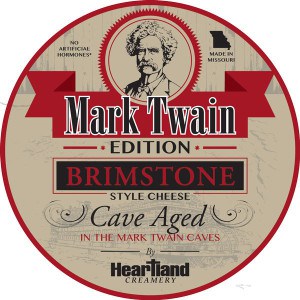
Cheesemaking is a time-tested and aged art, but the process is only half of the story! The history of cheese is not quite as simple as you might think, and it can connect us back to some of the most iconic figures of the past. From politicians to pop stars, join culture intern Emily as she dives into history and learns about the cheese culture during the life and times of some of America’s most famous faces.
In 2012, an exciting new cheese hit the market. With a lineup that included a selection of cow and goat’s milk cheeses, this particular brand was aged in the Mark Twain Cave in Hannibal, Missouri. Although the cheese itself had a delightful flavor, perhaps its biggest selling point was the novelty that this cheese had been aged in the very same cave that American author Mark Twain had written about in five of his novels. Most famously, the Mark Twain Cave played a pivotal role in The Adventures of Tom Sawyer, a book that holds an iconic place in our country’s literary history.

Photo Credit: behance.net
Mark Twain wrote his finest classics during an important period of American history, one that was characterized by rapid social change. This period, known as the Industrial Revolution, not only impacted the country’s economy but also greatly influenced America’s political and social structure as well. For the better part of the nineteenth century, the US was in a constant state of transition that set the nation on its trajectory towards our modern society. The Industrial Revolution, which was characterized by inventions and advancements of technology, established a cultural precedence driven by faster and more efficient production.

Photo Credit: non-solo-arte.com
Despite its long and established history, cheese was no exception to the newly industrializing world. In 1851, Jesse Williams opened America’s first cheese factory in Rome, New York, and quickly began producing upwards of 25,000 pounds of cheese a year. Williams was a leading figure in revolutionizing the cheese industry, and soon cheesemakers from across the country were mimicking his methods of large-scale cheese production. His most notable devotee was James L. Kraft, who went on to found Kraft Foods at the turn of the century.
Although an early model for the future Kraft empire, Williams’ factory was not all assembly lines and conveyor belts. Rather, what Williams’ did so successfully first was the method by which he acquired the essential raw materials of cheese production. Not only did Williams produce his own milk, he also began buying up all of the milk he could from other farmers so that his cheese production would not be limited to the resources of his own farm. While that might seem like an obvious step to us “civilized folk,” the idea of minimizing the steps in the production process was a key part to the Industrial Revolution as a whole. Historically, the vast majority of all consumer materials – from food products to clothing to furniture – were made on a more individual basis (that is, entirely from start to finish by one master craftsman), resulting in slow and limited production rates.
Jesse Williams’ revolutionary method of cheesemaking inspired others to follow suit, and within the next decade over 500 other cheese factories had been established. So began America’s future legacy of mass-produced cheese.
As factories, cities, and tightly packed urban populations exploded overnight, there were many nineteenth-century artists and scholars who lamented the disappearance of the simpler, pre-industrialized lifestyle. Yet many, like Mark Twain, found great joy in some of the advancements of the modern world (most notably, steamboats, of which Twain was particularly fond). With all of its countless benefits – such as advanced transportation, modern refrigeration, and the start of an era where cheese was more bountiful – the Industrial Revolution also ushered in a tendency towards quantity over quality. In the history of “American” cheese, the last century has been plagued by orange-colored chemicals and quick-melting curds.
However, our palates have been growing tired of the cheese-flavored powder that coats our favorite snacks, and in recent decades the popularity of quality artisan cheeses has been growing once again. An interest in the “slow and steady” approach to cheesemaking has resulted in the revival of products like the Mark Twain Cave Cheese, which focuses on the experience of producing cheese flavors, versus producing as much cheese as possible.
Comment to Win:
Mark Twain traveled extensively through Europe and published his travelogue, A Tramp Abroad. In it, he wrote about the American foods that he missed most, including “Roast turkey, Thanksgiving style… soft-shell crabs… [and] American coffee, with real cream.”
Based on Mark Twain’s patriotic palate, what type of cheese do you think would have been his favorite? Tell us your guesses in the comment section below, and you could win a free issue of culture! Comments must be posted by Tuesday, October 14, 2014 to be eligible to win. Winners must be located in the continental US.
Photo Credit: Featured image courtesy of caveagedcheeses.com



